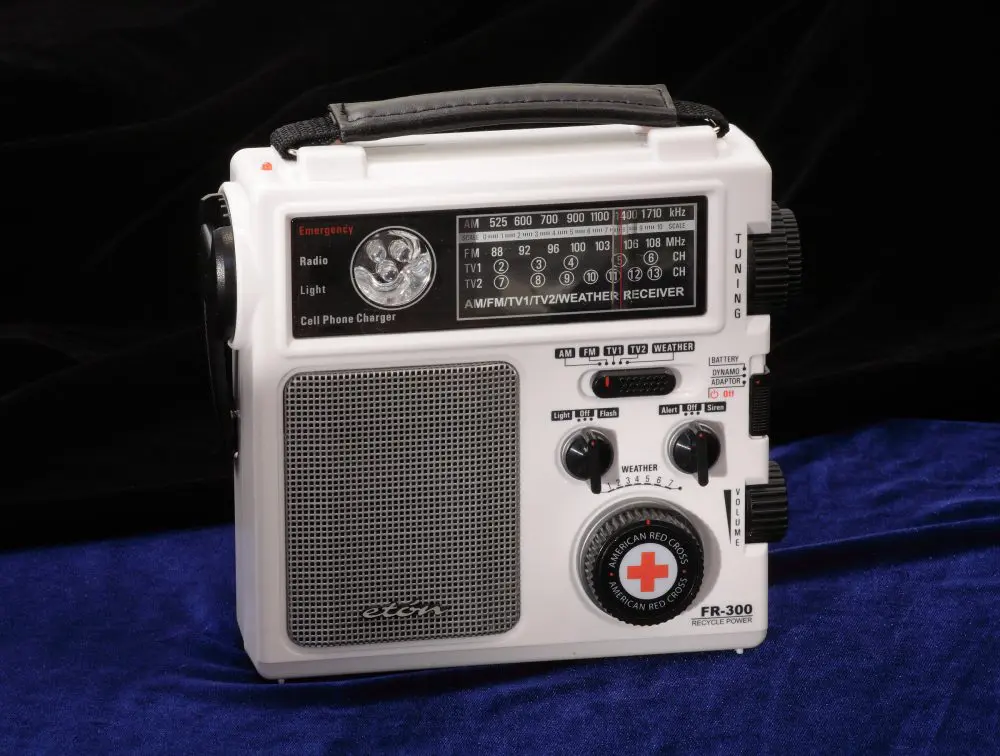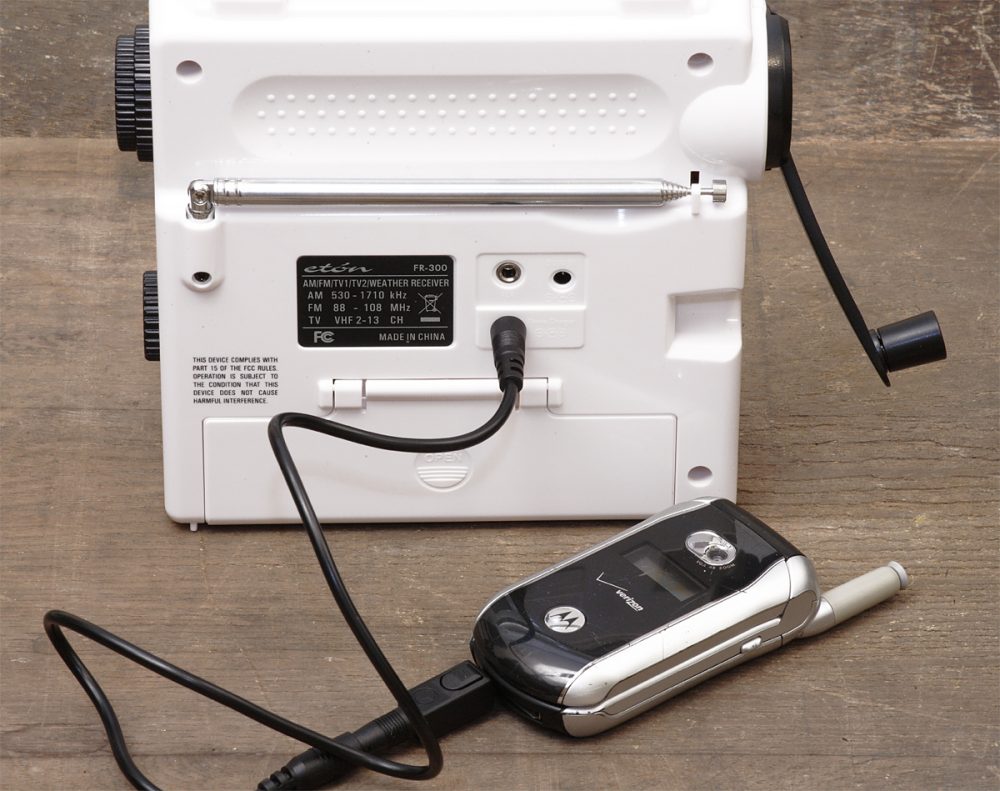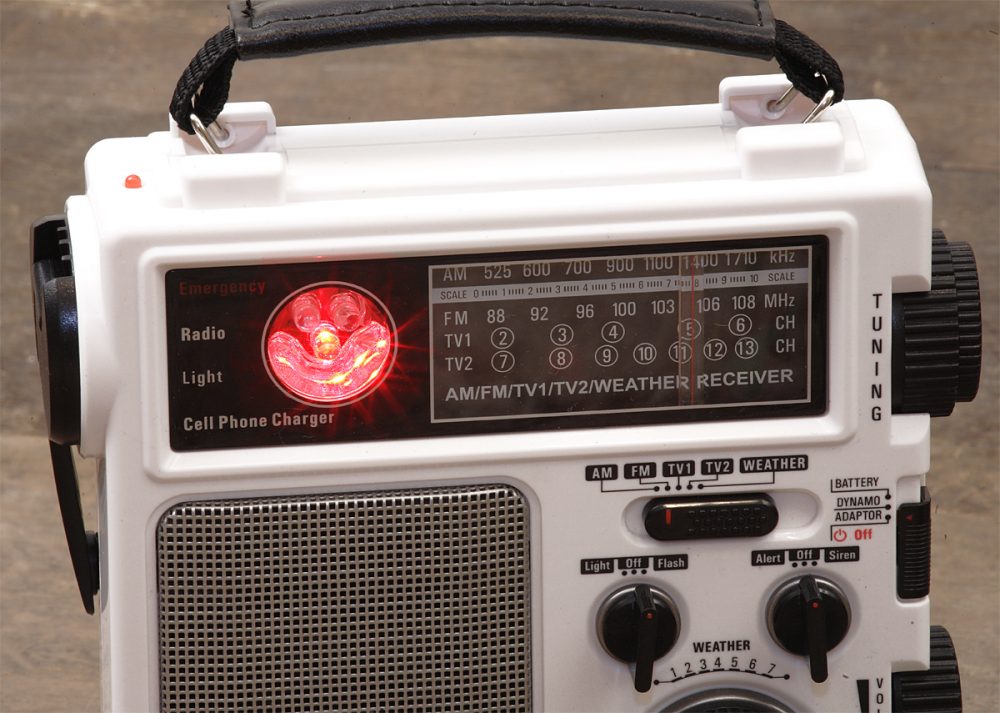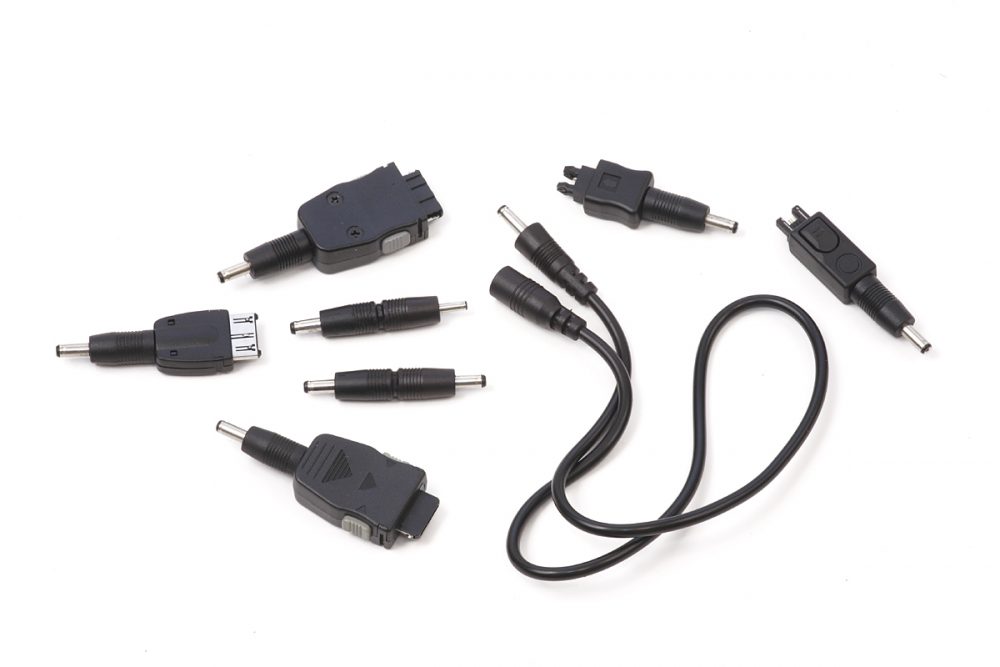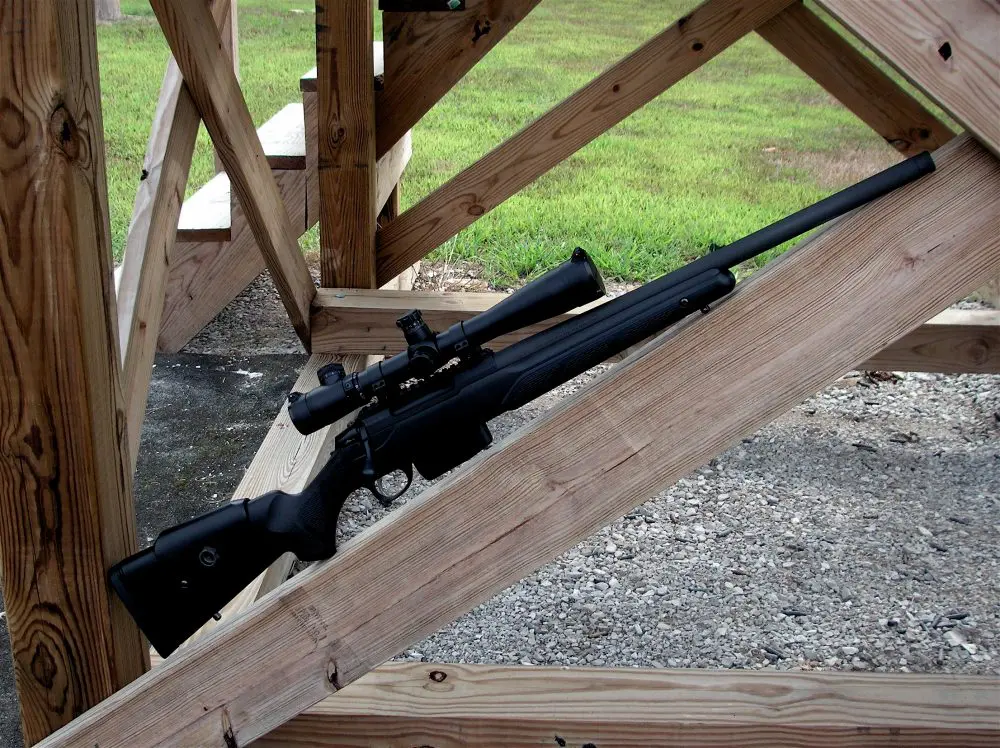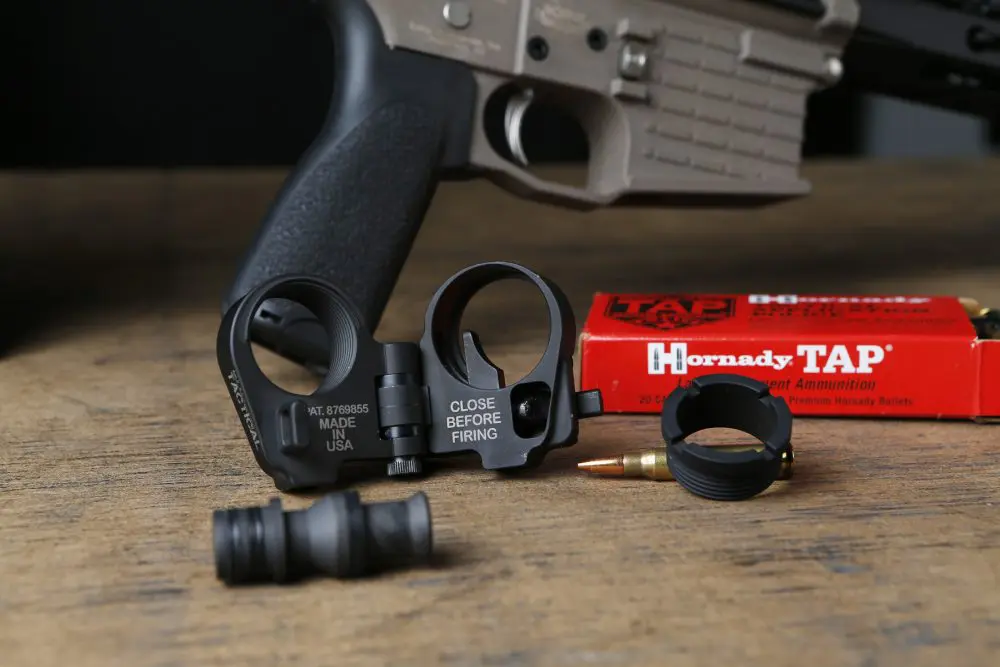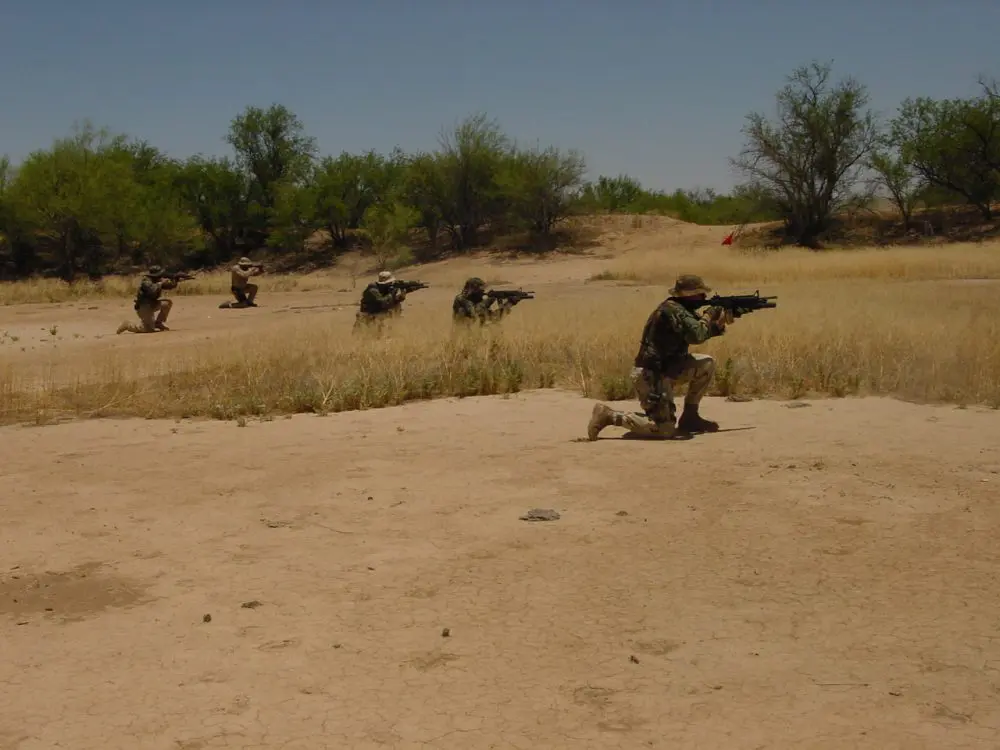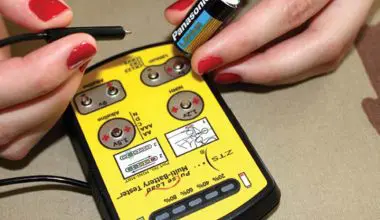Etón/Red Cross FR-300 Emergency Radio is a good homeowner-grade radio for indoor use.
About 15 years ago, we were without power for ten days when a 220-inch snowfall snapped pine trees and took down power lines throughout Northern Alabama. I realize that a major snowfall doesn’t seem like much to all of you who live up North, but down South we don’t have the equipment to deal with it, since snowstorms in these parts are a rare event. Luckily, I was well stocked with a couple gallons of vodka for medicinal purposes, plenty of canned food, a carton of cigarettes, gasoline for my generators and enough firewood to stay comfortable—but I was bored silly after two days. About the only thing we could do was sit around and listen to the latest progress reports on the radio because the cable TV lines had also gone down when the telephone poles snapped. As a result, I’ve learned that a reliable portable radio is one of the best emergency tools you can have when it comes to staying informed in a “hunker down” situation.
Even though that winter storm is well in the past, where I live you’re just as apt to lose power from a summer thunderstorm as you are from a winter snowstorm. And since all of my generators are portable, many times I resort to battery-powered devices to get news updates instead of taking the time to crank up a generator and plugging in. For several months now I’ve been trying out a small self-powered FR-300 emergency radio from the Etón Corporation. When I first examined it at the local Radio Shack, I was somewhat unimpressed, but in the interest of reporting the good, the bad and the ugly for this column, I gave them $49.99 + tax and walked out the door.
To charge a cell phone, plug the included cord and adapter into the back of the radio and crank the dynamo handle.
Due to this radio obviously not being a piece of hard-use gear, I decided that my testing would be based around the average homeowner who simply needs a reliable radio to get weather updates and emergency reports when the lights go out, and maybe use an emergency light or signal device in a worst-case scenario. All performance testing started with a completely dead battery pack and no other sources of power, such as the optional AA batteries or AC charging unit.
Table of Contents
RADIO MODE
In radio mode at a normal volume level, 60 seconds of winding the hand crank dynamo plays the radio for about 20 minutes, with 90 seconds producing about 30 minutes of play time. Reception for all bands is fair, but not as precise as my portable C. Crane receiver. I also noticed that, as the power decreases, station drift becomes an issue, and fine-tuning is required to get the best reception.
All NOAA weather stations are pre-tuned, so simply flipping the seven-position switch will find the station with the best reception. You can also switch to alert mode, so the radio is completely silent until NOAA issues an emergency alert. If you use this mode, then I suggest checking the radio every so often to make sure you still have battery power, since it consumes energy even in alert mode. As a side note, I’ve carried this radio on several vehicle trips throughout the Southeast and it has never failed to pick up a weather station, no matter what my location.
LED light works in both white-light mode and flashing red strobe for signaling.
LIGHT AND SIGNAL MODE
One feature I really like is the emergency light. From a completely exhausted battery, 60 seconds of winding gives you 45 minutes of LED light strong enough to easily navigate your way around obstacles in complete darkness. The light mode also doubles as a flashing red signal light at the flip of a switch, and 60 seconds of winding will give you about 25 minutes of flashing. When using the FR-300 in this mode, you need to keep the dynamo topped off every so often, since the strobe will be extremely bright for about ten minutes then taper off in intensity.
CELL PHONE CHARGING
The Red Cross version of the FR-300 that I bought (only model available at the store) came with a set of adapters and power cords to fit most common cell phones. My testing was done on a Motorola V265 phone with a “graveyard” dead battery. The manufacturer states that ten minutes of winding will give you roughly one minute of talk time. That may not seem like a lot, but a few seconds may be all you need to save your life. Being lazy and not wanting to wind on the dynamo for ten minutes, I plugged the phone in and started cranking. The phone immediately registered that the battery was charging and, after three winding sessions that each lasted two minutes, I was able to briefly connect a call before the battery shut the phone down.
While I’m on the subject of cell phones, let me add that any cell phone, whether it has an activated monthly service plan or not, is still capable of calling 911 if there is tower service in the area. So, before you throw your old cell phones away, donate them to someone who doesn’t have one (or can’t afford the monthly charges) just for emergency use. Who knows, that old cell phone might just save a life.
Charging adapter set is included with the FR-300 Red Cross radio.
CONCLUSION
So far, after several months of testing and using the radio, all the features still work, and I’ll probably throw it in a drawer for a just-in-case scenario. Is the radio worth the $49.99 price tag? For the average homeowner, I would say yes. In fact, I would consider it great insurance for those who have no real survival plan and rely on the “hunker down, do nothing, holler for help, and bitch when it’s not fast enough” mode of survival. For those of you who read this column and prepare on a daily basis for the unknown, then it’s probably not for you. The radio case is too fragile for any rough treatment or hard travel through rough terrain, it has no water-resistant features, and the knobs and battery compartments will break easily (I broke the battery compartment door just opening it).
While I like the concept and overall design, I would gladly pay twice the price for a similar radio with a tougher case and water-resistant features. It would also be better if a fully charged battery pack could be used as a “satellite” battery for your cell phone via the adapters, without having to crank the dynamo to charge the phone. With the current electrical configuration, that’s not possible.
As a side note, for every Red Cross version of the FR-300 sold, a donation of 65 cents is made to the American Red Cross—not that it means anything to me, since I have a philosophical disagreement with that particular organization, but that’s a topic for a future issue.
[Jeff Randall has worked and traveled in China, Korea, Malaysia, Indonesia, Singapore, Switzerland, and nearly every Latin American country. He is the co-author of the book Adventure Travel in the Third World and is also an accomplished photographer. He considers the Amazon jungle his second home. He can be contacted through www.jungletraining.com]
FR-300 Features
- AM/FM, TV1 and TV2-VHF channels 2-13
- NOAA Weather – all 7 channels plus “Alert”
- 3 LED light system with emergency flash
- Built-in cell phone charger
- Dimensions: 6.7”L x 6.5”H x 2.5”W
- Weight: 1.3 lbs
- Cordura carry case
- Can be powered from four different sources:
- Built-in power generator
- 3 AA batteries (not included)
- AC adapter (not included)
- Dynamo Crank
SOURCE:
Etón Corporation
Dept. S.W.A.T.
1015 Corporation Way
Palo Alto, CA 94303
(800) 872-2228
www.etoncorp.com
